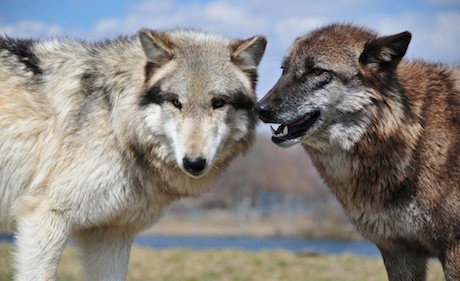[ad_1]
Which wolf do you feed?
The Practice:
Feed the wolf of love.
Why?
I once heard a teaching story in which an elder, a grandmother, was asked what she had done to become so happy, so wise, so loved, and respected. She replied: “It’s because I know that there are two wolves in my heart, a wolf of love and a wolf of hate. And I know that everything depends on which one I feed each day.”
This story always gives me the shivers when I think of it. Who among us does not have both a wolf of love and a wolf of hate in their heart?
I know I do, including the wolf of hate, which shows up in small ways as well as large ones, such as when I get judgmental, irritable, pushy, or argumentative. Even if it’s only inside my own mind – and sometimes it definitely leaks out.
We’ve got these two wolves because we evolved them because both wolves were needed to keep our ancestors alive.
Until just 10,000 years ago, for millions of years primates, hominids, and early humans lived in hunter-gatherer groups that bred mainly within the band while competing intensely with other bands for scarce resources. Therefore, genes got passed on that promoted better cooperation inside a band and better aggression between bands. The wolf of love and the wolf of hate are stitched into human DNA.
Bands kept their distance from each other, and when they met, they often fought. For example, researchers have found that about 12-15% of hunter-gatherer men died in conflicts between bands – compared to “just” the 1% of men who died in the many bloody wars of the 20th century.
So it’s natural to fear the stranger – who, back in the Stone Age with no police around, was often a lethal threat. The related impulse to dehumanize and attack “them” also worked well (in terms of passing on genes) for millions of years.
Today, you can observe the wolf of hate all around us, in acts of thought, word, and deed. For example, as soon as we see others as “not my tribe,” whether it’s at home or work or on the evening news, the wolf of hate lifts its head and looks around for danger. And then if we feel at all threatened or mistreated or desperate, the wolf of hate jumps up and looks for someone to howl at or bite.
While the wolf of hate was vital back in the Serengeti, today it breeds alienation and anger, ulcers and heart disease, and conflicts with others at home and work.
And at a larger scale, with 7 billion people crowded together on this planet – when a flu mutation in Hong Kong can become a worldwide epidemic when bank problems in Greece roil the global economy when carbon emissions in one country heat up the whole world – when we fear or dehumanize or attack “them,” it usually comes back to harm “us.”
[ad_2]
www.rickhanson.net







